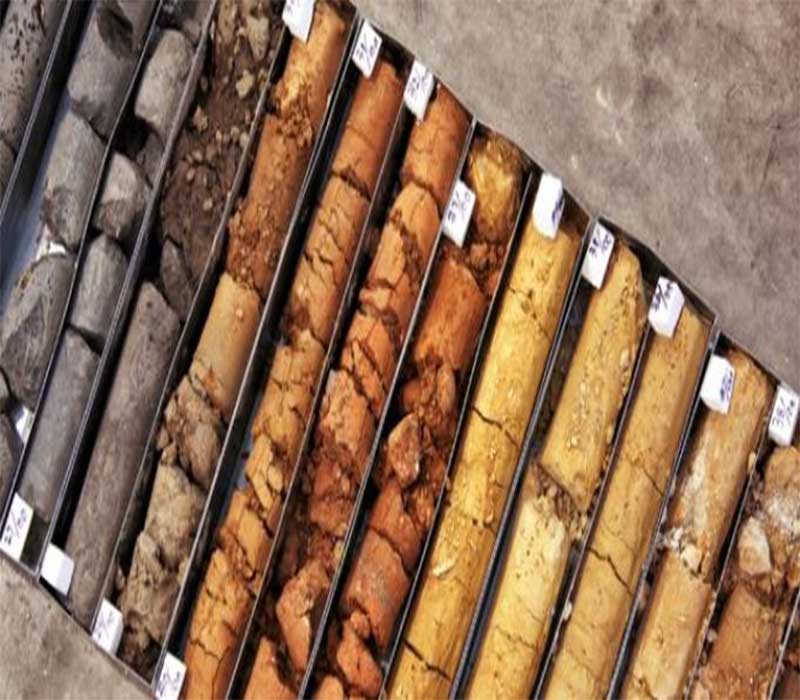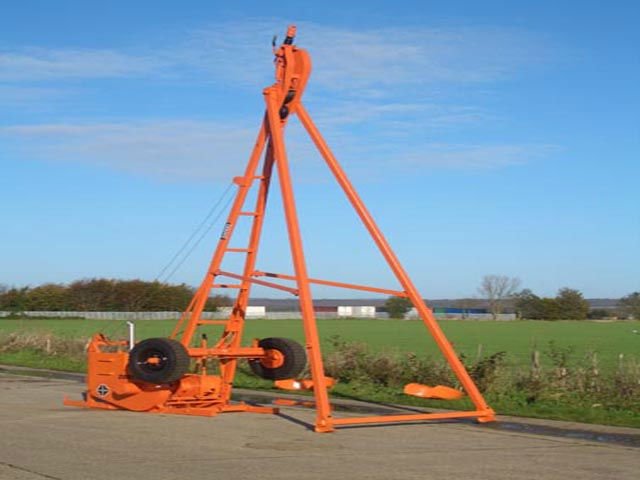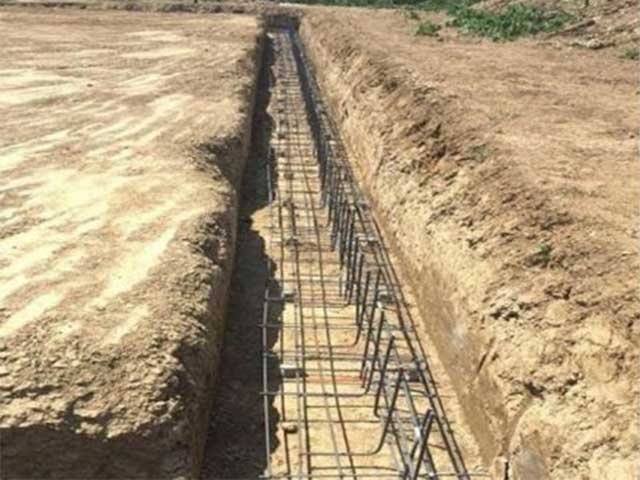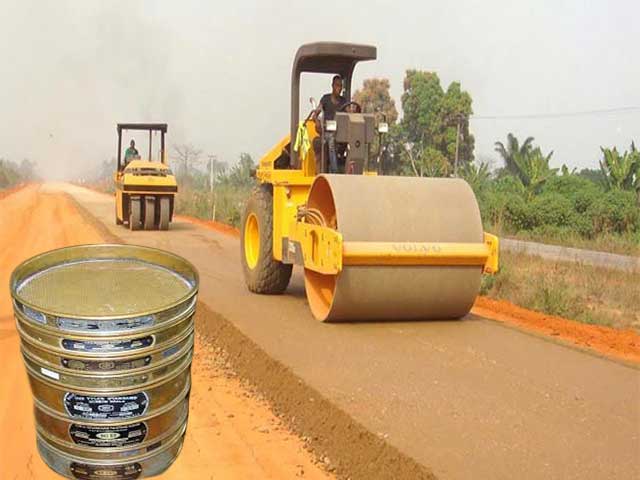Soil Classification for Engineering purposes
Soil classification is the arrangement of different soils with similar properties into groups and subgroups based on their application.
Soils may be classified in a general way as:
- Cohesive vs. cohesionless
- Fine- grained vs. coarse grained
- Residual vs. Transported
However these terms are too general and cover too wide range of physical and engineering properties.
A more refined classification is necessary to determine the suitability of a soil for specific engineering purposes.
Therefore, these terms are collected into SOIL CLASSIFICATION SYSTEMS, usually with some specific engineering purpose in mind.
Most of the soil classification systems that have been developed for engineering purposes are based on simple index properties such as particle-size distribution and plasticity.
NEED FOR SOIL CLASSIFICATION SYSTEMS
- A soil classification system represents, in effect, a language of communication between engineers.
- It enables one to use the engineering experience of others.
- The engineering properties have been found to correlate quite well with the index and classification properties of a given soil deposit.
- Therefore, by knowing the soil classification, the engineer already has a fairly good general idea of the way the soil will behave.

Why more than one Classification System are in use?
- Classification systems are used to group soils in accordance with their general behavior under given physical conditions.
- Soils that are grouped in order of performance for ONE SET of Physical CONDITIONS will not necessarily have the same order for performance under other set of physical conditions.
- This led to classifying soil by use, and each agency (Like FAA, AASHTO, USBR) has in mind specific use for the soils.
SOIL CLASSIFICATION SYSTEMS
The two major systems used at present are AASHTO and USCS. Both systems take into account the particle-size distribution and plasticity.
- The AASHTO classification system is used mostly by highway departments. Geotechnical engineers generally prefer the Unified system USCS
A. AASHTO CLASSIFICATION SYSTEM
- The AASHTO soil classification system was originally developed in the late 1920’s (1929) by the U.S. Bureau of Public Roads (BPR) for the classification of soils for highway subgrade use.
- It was developed as a result of the work of Hogentogler in the 1920’s.
- Adopted by Bureau of Public Roads in 1931.
- AASHTO : Acronym of American Association of State Highway and Transportation Officials.
- Originally, the system classified soil as being either a group A or a Group B.
- A Group A soil was able to maintain uniform pavement support at all location whereas the Group B soils were not.
- The B designation was subsequently deleted, leaving only A soils in the classification system.
- Consequently, the “A” still remains in an AASHTO classification of a soil type, but it no longer has any real significance.
- The A soils were subdivided into eight subgrade soil groups. A-1 through A-8.
- It went through various revisions since 1929, and the classification system received its last revision in 1974.
- ASTM D-3282; AASHTO method M145
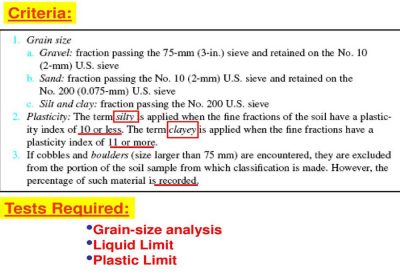

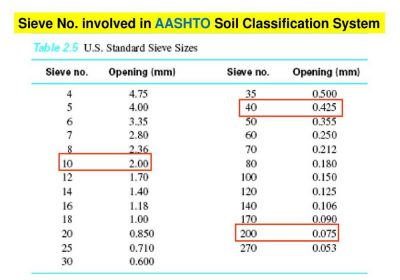
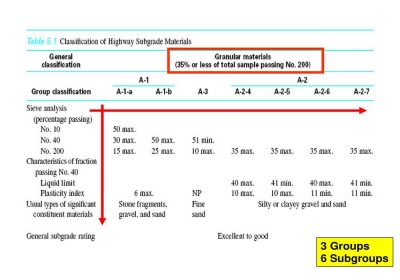
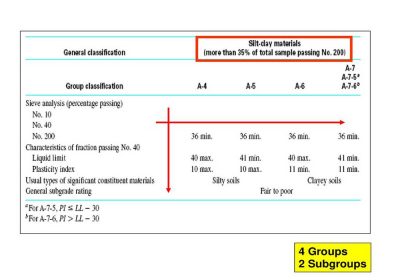
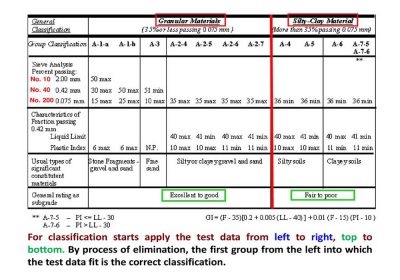
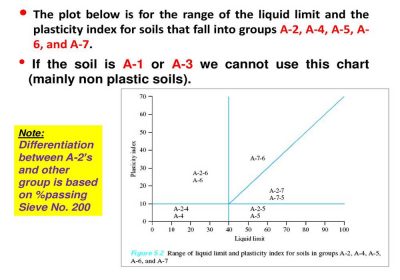
REMARKS
- According to this system, soil is classified into eight major groups, A-1 through A-8.
- Soil group A-8 is peat (very organic) or muck (thin very watery, and with considerable organic material).
- A soil is classified according to the table by proceeding from left to right, top to bottom, column by column on the table to find the first group in which the soil test data will fit.
- The first group from the left into which the test data will fit is the correct classification.
- The classification process stops at this point regardless if another column farther to the right can also qualify.
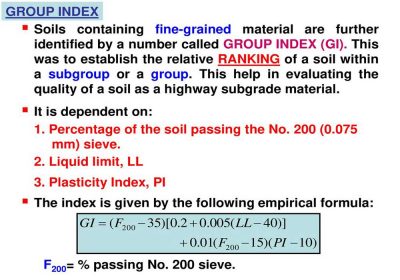


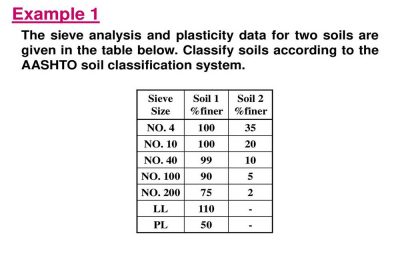
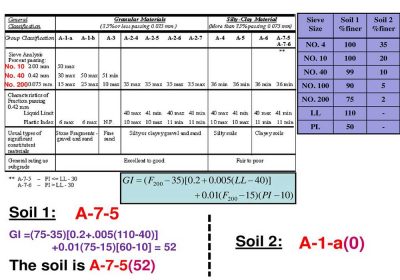
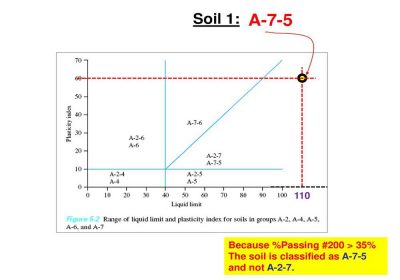
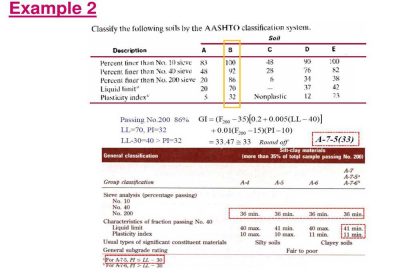


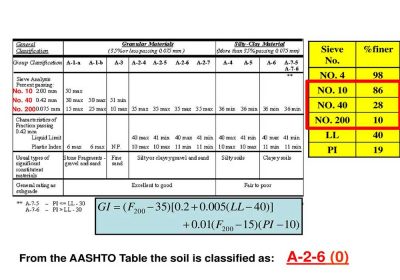
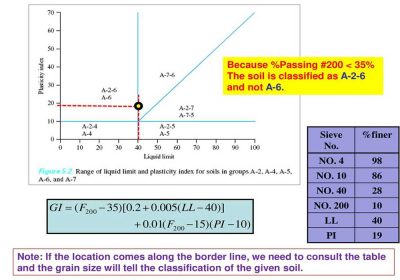
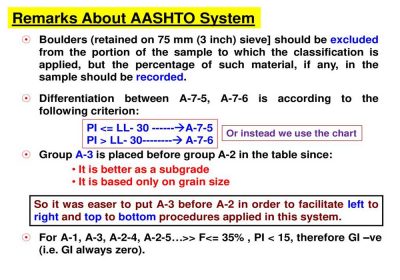
B. UNIFIED SOIL CLASSIFICATION SYSTEM (USCS)
- This system was developed by Arthur Casagrande in 1942 for use in the air field construction works undertaken by the Army Corps of Engineers during WW II.
- To make it applicable to DAMS and other constructions besides airfields, it was revised in 1952 in cooperation with the USBR.
- The system was last revised in 1984 by the ASTM by the addition of a GROUP NAME to the group symbol. This modification has not been adopted by some agencies which use USCS to classify soils.
- ASTM Test Designation D-2487.
This system is the most popular soil classification system among geotechnical engineers.
- This system classifies soils under three broad categories:
- Coarse-grained soils < =50% passes sieve No. 200
- Fine-grained soils > 50% passes sieve No. 200
- Organic
- Criteria for USCS:
- Grain size
- Cu, Cc
- Plasticity (Plasticity chart)
- Tests required
- Grain-size analysis
- Liquid Limit
- Plastic Limit
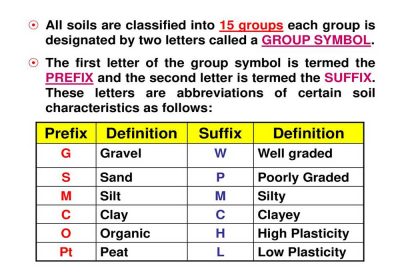
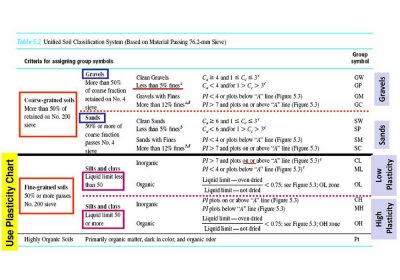
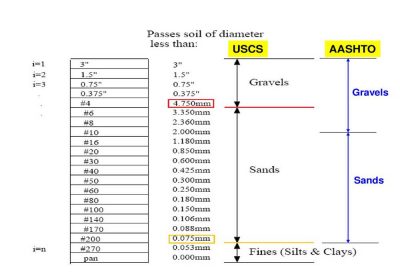
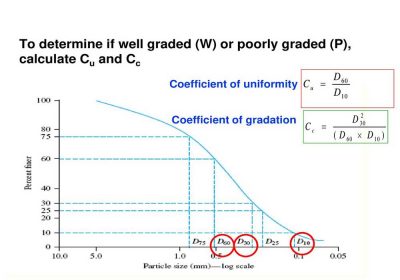

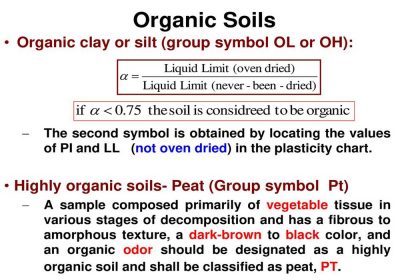
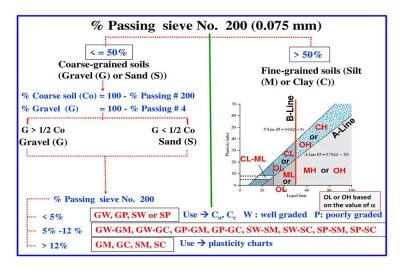
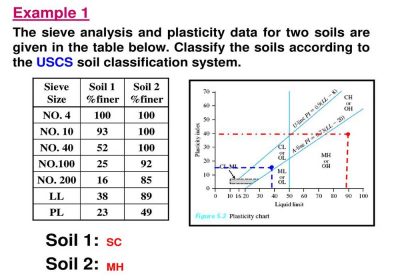
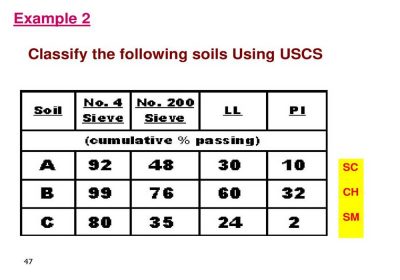
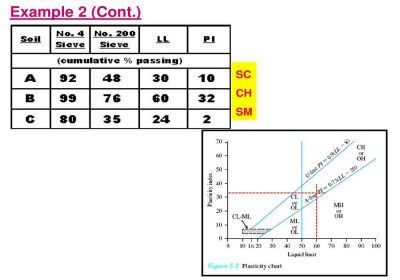
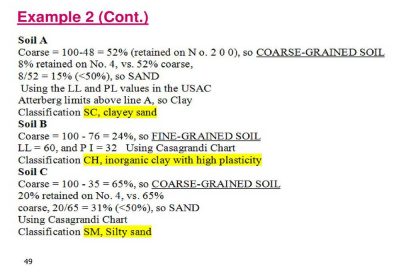
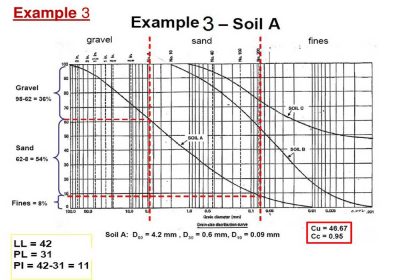
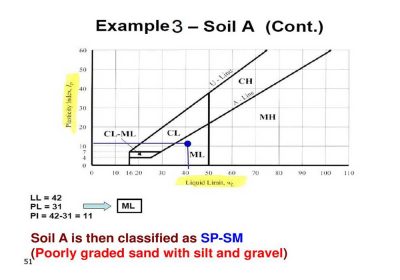
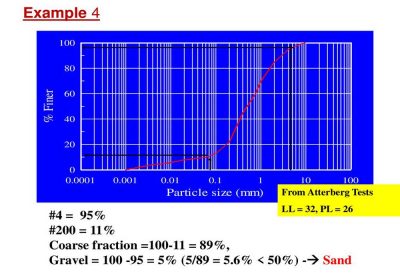
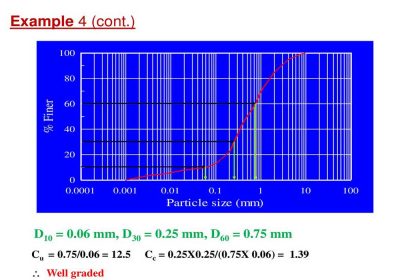
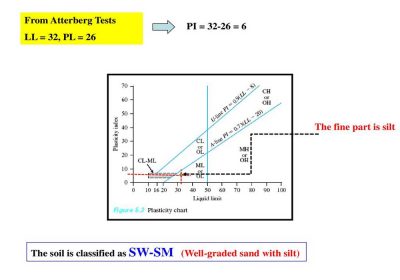
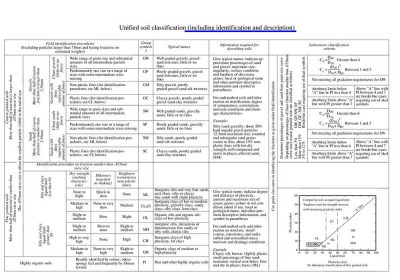
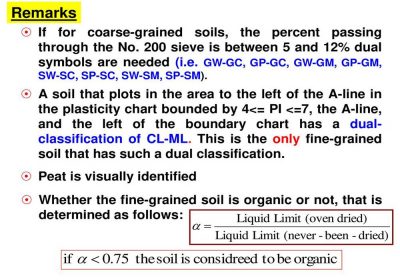
Comparison of the USCS and AASHTO Classification Systems
- In AASHTO if 35% passes No. 200 fined-grainedèIn USCS if 50% passes No. 200 fined grained
- In AASHTO Sieve No. 10 is used to separate gravel from sand, in USCS it is Sieve No.4.
- In USCS, the gravely and sandy soils are clearly separated, in the AASHTO system they are not.
- The symbols GW, SM, CH and others that are used in the USCS are more descriptive of the soil properties than the A symbols used in the AASHTO system.
- The classification of organic soils such as OL, OH, and Pt has been provided in the USCS. In AASHTO system, there is no place for organic soils. (A-8 has been taken out).
- In AASHTO PI is used to distinguish between silt and clay (LL appears only in distinguishing A-7-5 and A-7-6). In USCS both PI and LL (plasticity chart) are used.
- USCS distinguishes high and low plastic fine-grained soils.
- Both AASHTO and USCS are better than most other available systems when applied to engineering or construction applications.
- Both AASHTO and USCS systems have the advantage of having been used for many years and having gained acceptance in the engineering and construction fields.
Talk to us for your upcoming project in Soil Testing
Geodata Evaluation & Drilling LTD. offers Geotechnical Soil Testing services. Let us handle the project for you. contact us at www.geodatadrilling.com Phone: +234 8037055441
